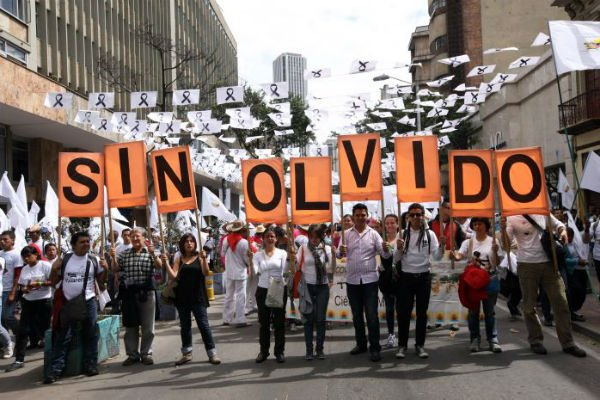
The Commission of Truth (CV) and the Search Unit for Presumed Disappeared Persons (UBPD) began on Monday several events aimed at highlighting the thousands of Colombian families that are still searching for at least 120,000 people who disappeared during long civil war.
From August 26-28, these human rights organizations will tour five Colombian cities and hold conferences on experiences related to the search of missing or abducted people in civil war situations.
Over the last four decades, relatives of missing persons have been demanding the Colombian government provide answers to two questions: what happened and where are their loved ones.
According to international human rights law and the 2002 Rome Statute of the International Criminal Court, a “forced disappearance” occurs when the State (or an organization with its authorization, support or acquiescence) abducts or imprisons secretly a person, an act which is subsequently followed by the refusal to recognize the victim’s fate and whereabouts, for the perpetrator intents to place him or her outside the protection of the law.
Given the indifference of the authorities, the victims’ organizations in Colombia have developed their own methodologies for finding missing persons.
During their fight for justice, they made Colombian laws incorporate the concept of “disappearance.” They also achieved that the 2016 Peace Agreement included a mechanism dedicated to the search for missing persons.
Currently, the CV and the UBPD are working together to raise awareness about both the impacts of forced disappearance and the work undertaken by families in the struggle for the dignification of their victims.
Although the real number of missing persons still remains unknown, the Truth Commission estimates that, so far, the number of cases is equivalent to all the inhabitants of Rionegro city (Antioquia) or Ipiales city (Nariño).
Despite the magnitude of the problem, the first “official” record of a forced disappearance occurred in 1977, when Omaira Montoya, a militant of the National Liberation Army (ELN), was captured by the Colombian intelligence police. For the last 42 years, however, the authorities have not provided answers about her whereabouts.
“Forced disappearance was always used during the armed conflict as a weapon of war: to silence those who claimed for a just society and to sow terror in the midst of communities… It is also a crime of difficult trace and for that reason it is mostly in impunity,” indicated Colombia in Transition, an initiative for the journalistic coverage of the “Comprehensive System of Truth, Justice, Reparation and Non-repetition”.
 Escambray ENGLISH EDITION
Escambray ENGLISH EDITION





Escambray reserves the right to publish comments.